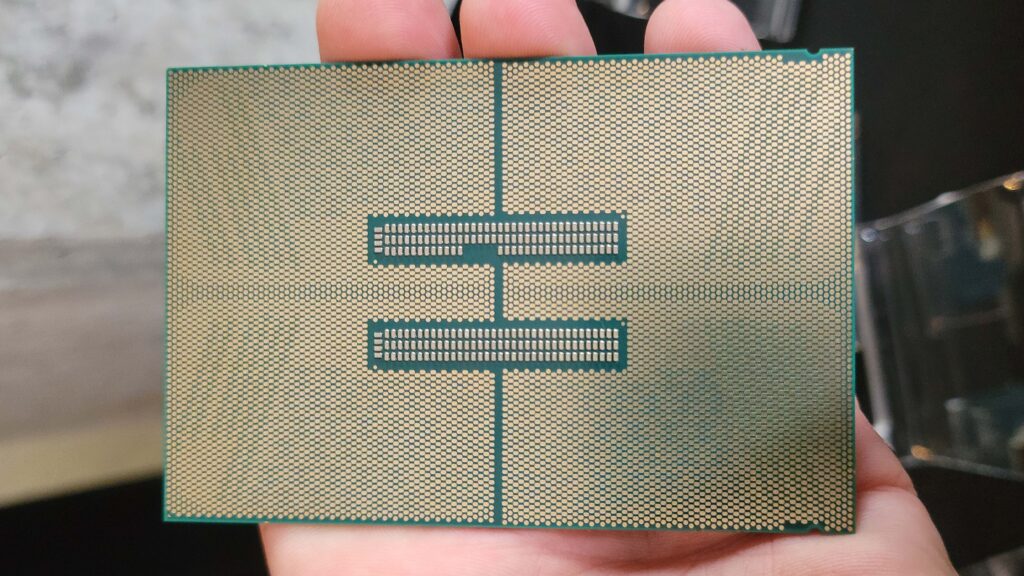
Rambus announces HBM4 memory controller for AI GPUs — controller enables up to of 2.56 TB/s per HBM4 memory stack across a 2048-bit memory bus
September 10, 2024
AMD’s dense Zen 4c cores go embedded — new EPYC Embedded 8004 series CPUs for compact and efficiency focused servers
October 2, 2024Clearwater Forest is key to Intel’s future.
Forget Lunar Lake; If there's one chip family that serves as the lynchpin for Intel’s entire turnaround plan, it's this – the company’s coming Clearwater Forest Xeon that it revealed for the first time at a recent event. The chip family is exceedingly important because this is the first high-volume chip to be fabbed on the Intel 18A process node, a node so critical that Intel CEO Pat Gelsinger has said he has bet the entire company on it.
Yes, Intel will make plenty of other processors with the 18A node, but mass-producing the Clearwater Forest chips on time is paramount to building confidence in Intel Foundry for potential customers, and that's the key to Gelsinger's entire turnaround plan. It also marks the culmination of Gelsinger’s audacious and now seemingly last-ditch effort to develop five nodes in four years to spark a resurgence at the ailing chipmaker.
Intel displayed the Clearwater Forest chip for the first time at its Enterprise Tech Tour event in Portland, Oregon, last week, but it won't come to market until sometime next year. Intel also unveiled its latest Xeon 6 Granite Rapids data center chips at the event, and they do look promising — Intel has now matched the number of cores in AMD’s competing data center processors for the first time since EPYC launched in 2017.
However, while Xeon 6 comes with Intel’s competitive ‘Intel 3’ node, the underlying process node still lags behind the 3nm TSMC transistors that will power AMD’s EPYC Turin processors that launch next month.
Intel plans for its 18A process to overtake TSMC's tech in several key criteria, thus propelling the company to a historic comeback – and that’s where Clearwater Forest comes in. As the first chip fabbed on 18A in high volumes, it is critical not only for Intel’s products but also for its Intel Foundry subsidiary to become a contract chipmaker for other companies, much like its rival TSMC. Gelsinger’s plan ultimately hinges on making chips for other companies to sustain the cash flow it needs to continue developing leading-edge chip technology.
Earlier this month, Intel canceled its interim 20A process, a pipe cleaner node that provided a development platform for the disruptive tech that powers the 18A node. That means the onus is now even more so on 18A to save the company than when Gelsinger conceded, “I’ve bet the whole company on 18A,” in an interview with TechTechPotato six months ago.
In fact, things have only gotten worse for the company since that interview. Intel has now dropped to a mere $96 billion market cap while companies it routinely thrashed in the past have risen to new heights, like AMD, which now sports a $250 billion market cap, and Nvidia, which hovers just shy of a stunning $3 trillion cap. Amazingly, even memory vendors like SK hynix and Samsung are apparently poised to generate more revenue in the third quarter than Intel, a once unthinkable feat as the memory vendors capitalize on the AI boom.
Intel continues to axe programs – so many that I’ve lost count – and has recently begun to lay off more than 15% of its workforce, or 15,000 workers. It even issued yet another emergency restructuring plan last week that includes pausing several fab projects.
The situation has apparently become so dire that what was completely inconceivable a few short years ago, Qualcomm reportedly making overtures to take over Intel, now dominates the headlines.
Looking back over history finds Intel missing out on several revolutions, like rejecting the chance to make smartphone chips for Apple, killing its nascent Larabee GPU project that could have placed it in the driver’s seat for the AI revolution, and even reportedly passing on the chance to own a piece of OpenAI before the current AI hype cycle took hold, among others.
But while those missed opportunities were painful, they obviously weren’t fatal blows. Perhaps none of the company’s missteps have brought it to its knees like its then-uncharacteristic delays to its 10nm node. That shortcoming weakened the company as AMD barreled in with suddenly class-leading TSMC nodes powering its chips in both the consumer and enterprise markets, slowly eating away at Intel’s market share and, perhaps more importantly, taking massive chomps out of Intel’s margins.
Intel’s stagnation has even helped breathe new life into Arm, which is arguably now becoming even more of a threat than AMD in the data center and consumer market. Meanwhile, TSMC has risen to be the predominant leading-edge chipmaker for the entire world, leaving the US in the tenuous position of not having a domestic supply chain capable of taking over if the long-simmering China and Taiwan tensions boil over into a war.
Because 18A is Intel Foundry’s premiere node, now the entire plan hinges on the transistors found in the Clearwater Forest chips that the company revealed at the event for the first time. If Intel can produce those chips economically, they will be the key to its turnaround, particularly because it will entice other companies to have their own chips made at Intel Foundry. If Intel can’t punch these chips out in high volume or is beset by delays, we could be looking at a future that doesn’t include an Intel that resembles its current form.
As unbelievable as it sounds, it really has come down to this. For now, all signs point to Intel’s 18A being a healthy, production-class node. That's a good sign, as the market needs competition to keep prices in check, not to mention that, for the sake of national security, the US needs a domestic chipmaker punching out leading-edge nodes.






